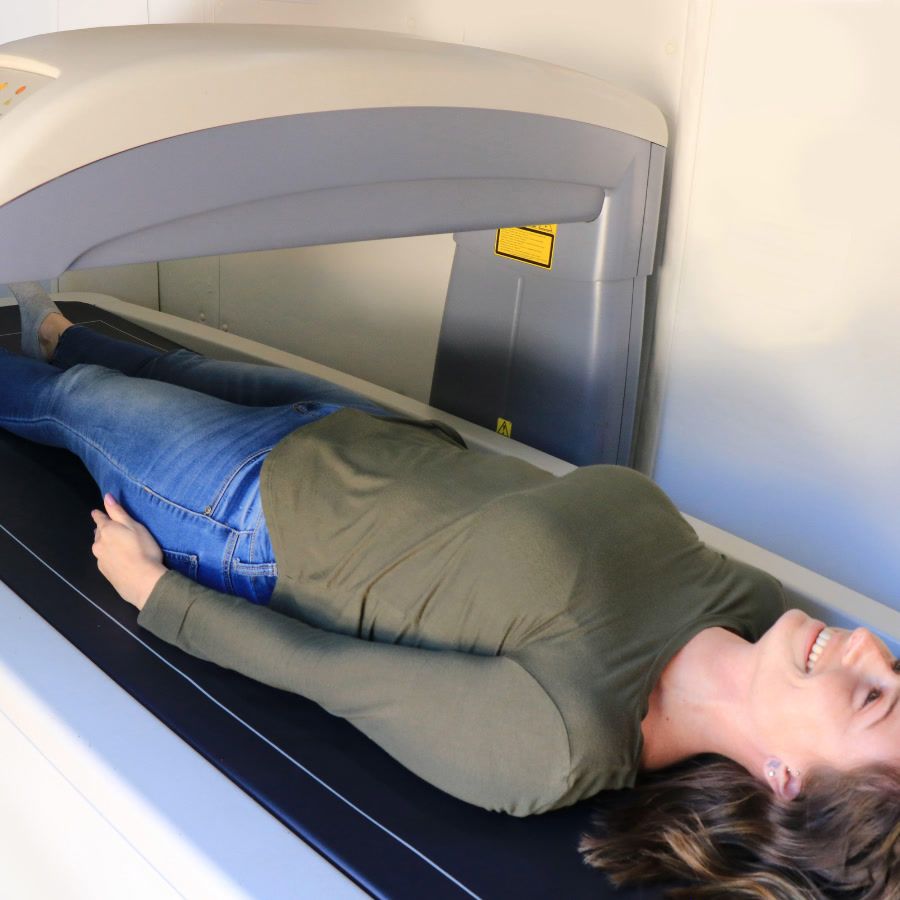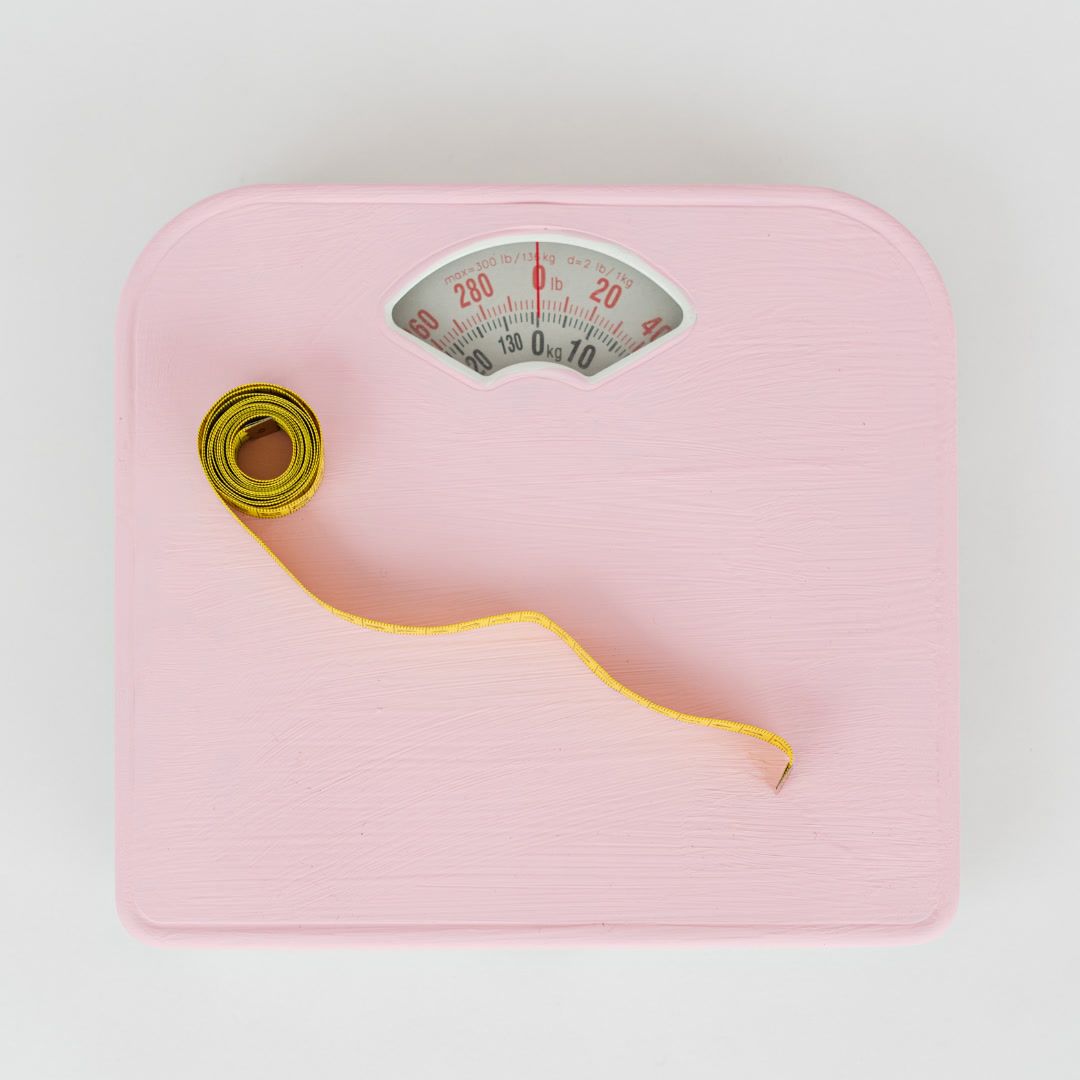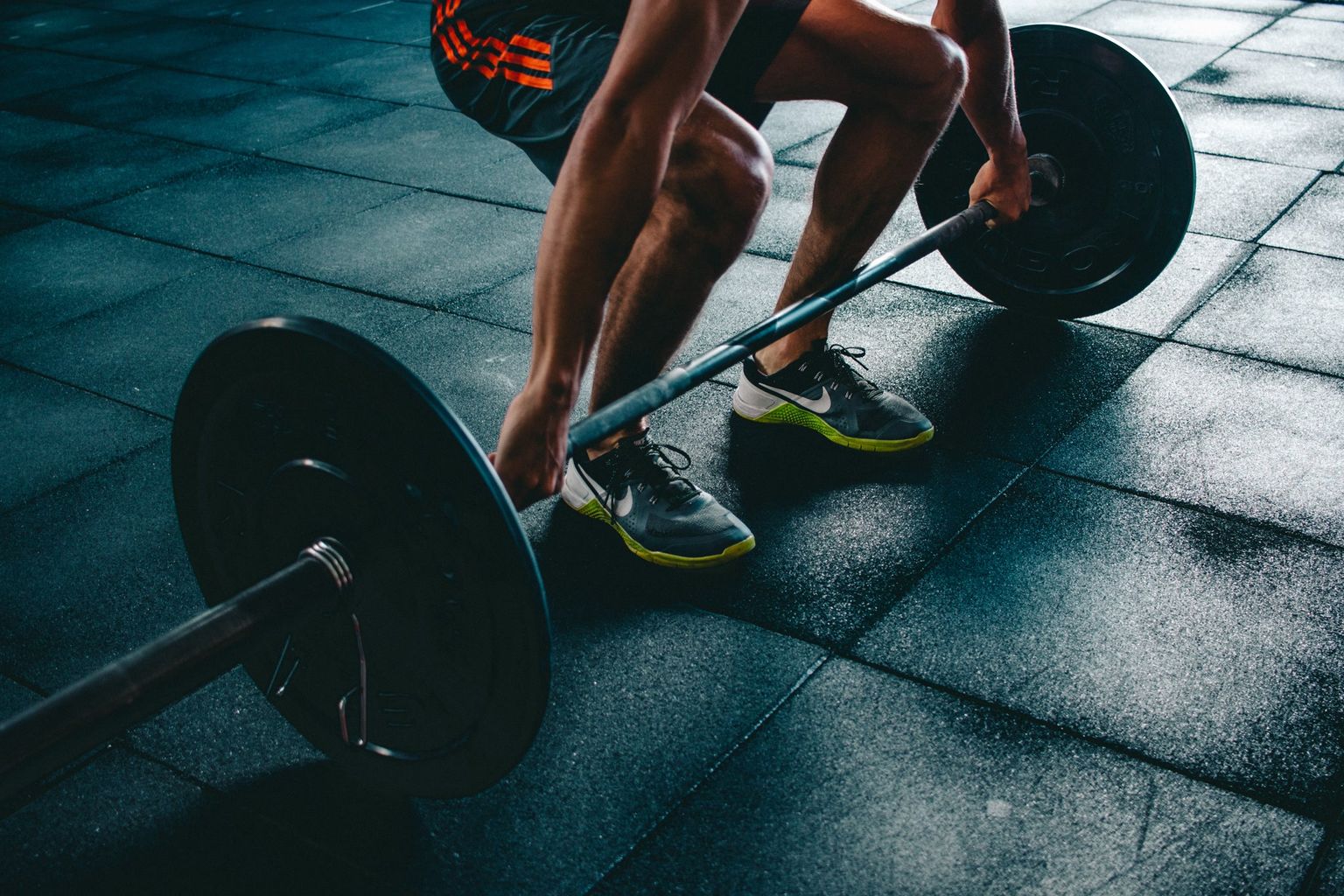15 Aerobic Step Exercises for Cardio & Bone Health
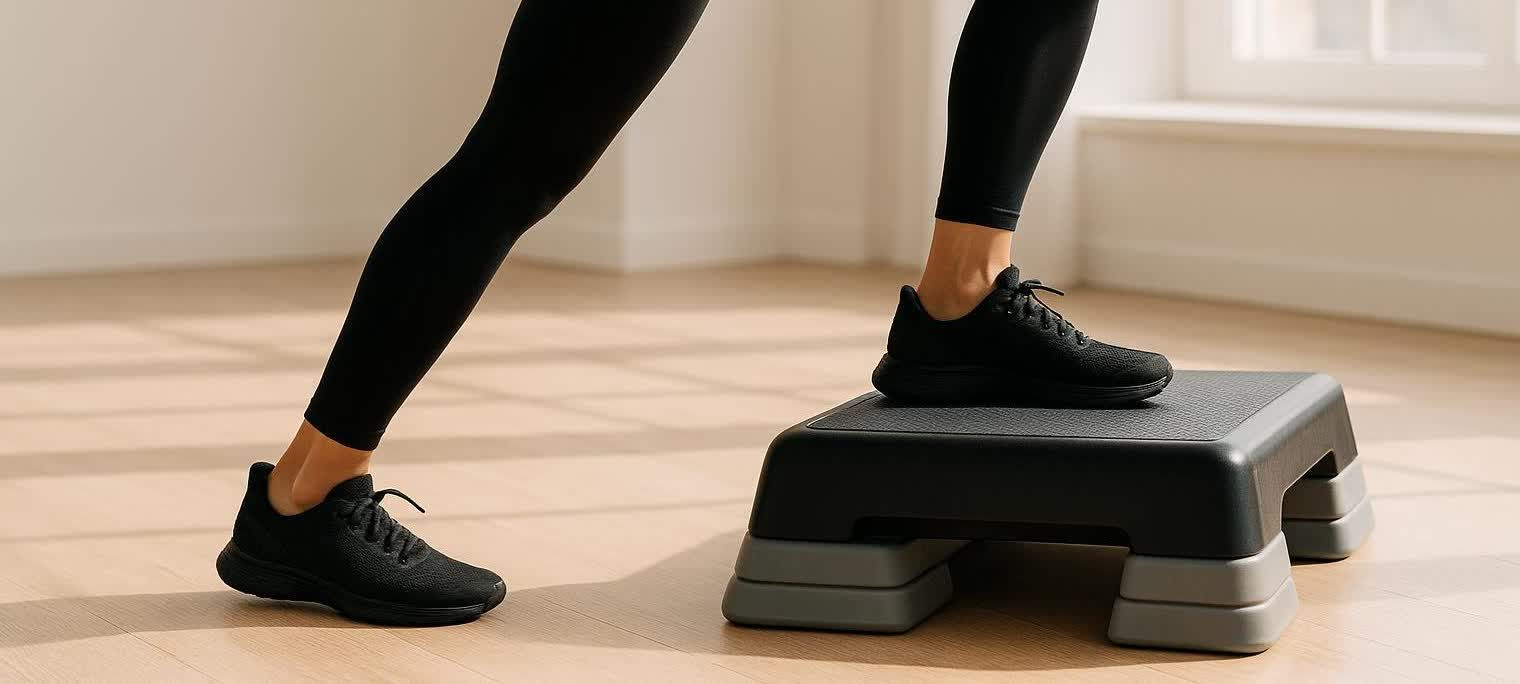
15 Aerobic Step Exercises for Cardio & Bone Health
If jogging hurts your knees and the treadmill bores you to tears, aerobic step exercises might be your new fitness crush. According to Harvard Health, a 30-minute session can burn 210–294 calories. Plus, step class will:
- strengthen your legs, glutes, and core—step aerobics activates key lower-body and core muscles every session
- expose your hips and spine to the gentle impact that research shows can increase bone density in just 10 weeks
And unlike many boutique workouts, step aerobics is inexpensive, apartment-friendly, and easy to scale for every fitness level.
Table of Contents
- Quick-Start 5-Move Routine
- Why Step Aerobics Works: Science & Benefits
- Picking the Right Step & Height
- 15 Aerobic Step Exercises (Cardio, Strength, Core)
- Programming Templates: Beginner → Advanced
- Calorie-Burn & Progress Tracking
- Safety Tips, Joint-Friendly Mods & Equipment Add-Ons
- FAQ
- Measure Your Progress with a DEXA Scan
1. Quick-Start 5-Move Routine
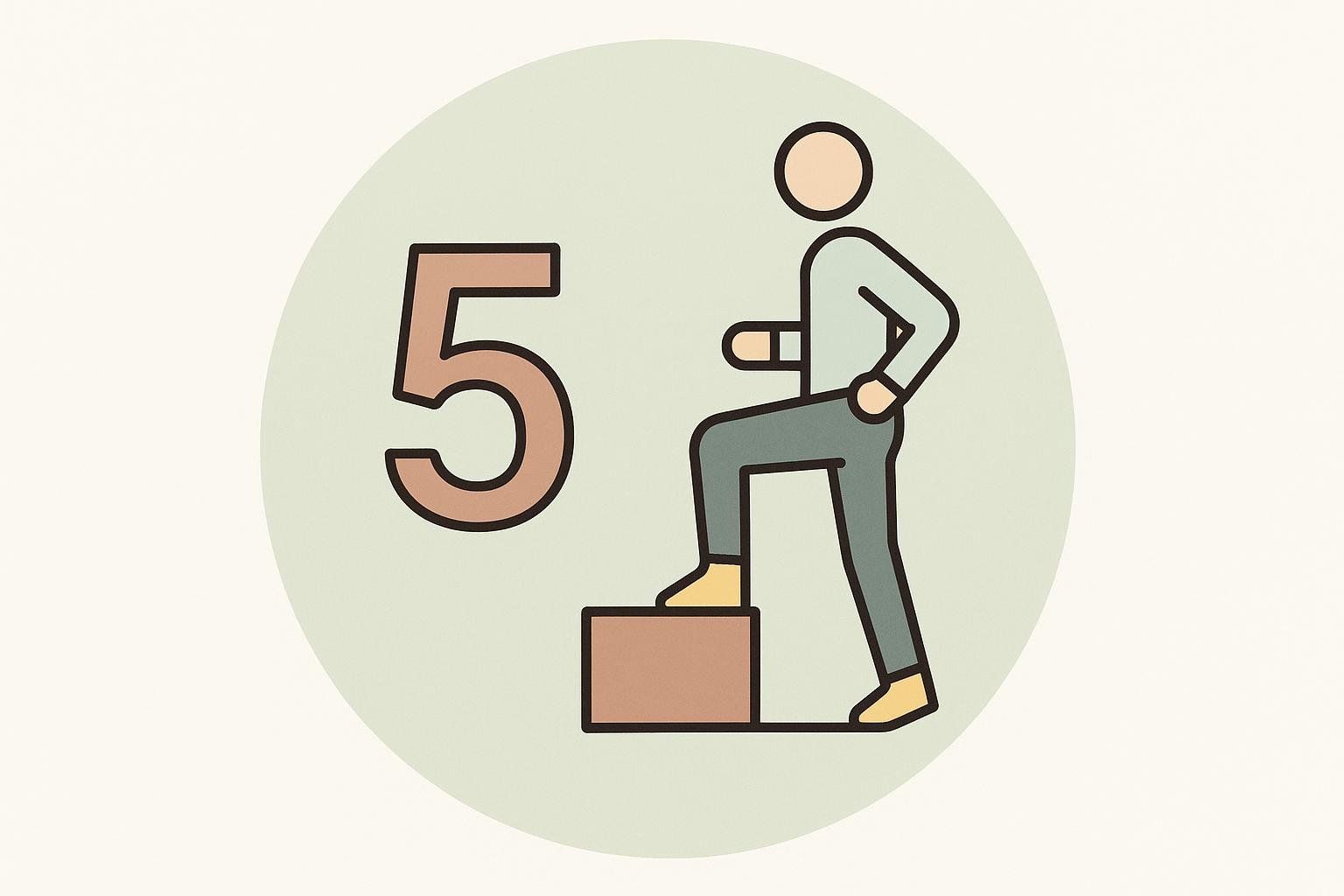
Perform this circuit twice for a 10-minute sweat-starter.
- Basic Step (right lead) – 60 s
- Basic Step (left lead) – 60 s
- Corner Knee Raise – 10/side
- Hamstring Curl Step – 10/side
- March on Top – 60 s
Rest 30 s between moves; lower step height for less intensity.
2. Why Step Aerobics Works
| Benefit | How It Happens | Evidence |
|---|---|---|
| High Calorie Burn | Continuous climbing taxes large lower-body muscles | 210–294 calories in 30 min |
| Full-Body Strength | Quads, hamstrings, glutes push; core stabilizes; arms drive | Step aerobics engages calves, quads, hamstrings, glutes & core (WebMD) |
| Bone Density Boost | Repetitive ground-reaction forces signal osteoblasts | 10-week step program improved bone metabolism in low-BMD women |
| Balance & Coordination | Multidirectional footwork challenges proprioception | Better single-leg stability helps fall prevention (exercises to improve balance) |
Each rep is like sending a memo to your heart, muscles, and bones: “reinforce this body!”
3. Picking the Right Step & Height
| Fitness Level | Recommended Step Height | Why |
|---|---|---|
| Beginner / Joint Concerns | 4–6 in (one riser) | Keeps angles shallow, easier on knees |
| Intermediate | 6–8 in | Classic gym height, moderate heart-rate bump |
| Advanced / Power Moves | 8–10 in | Greater range of motion & calorie burn |
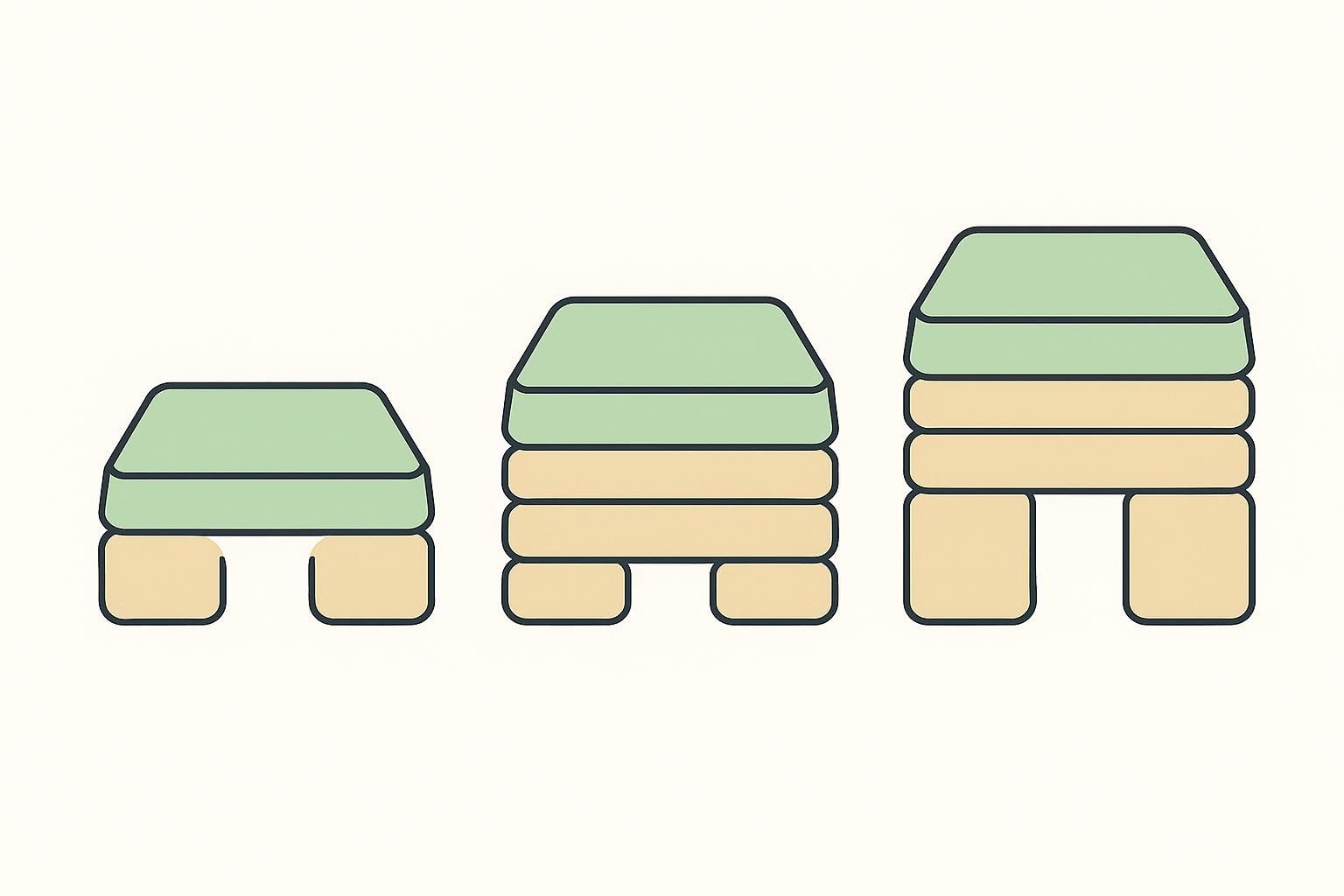
Form cues
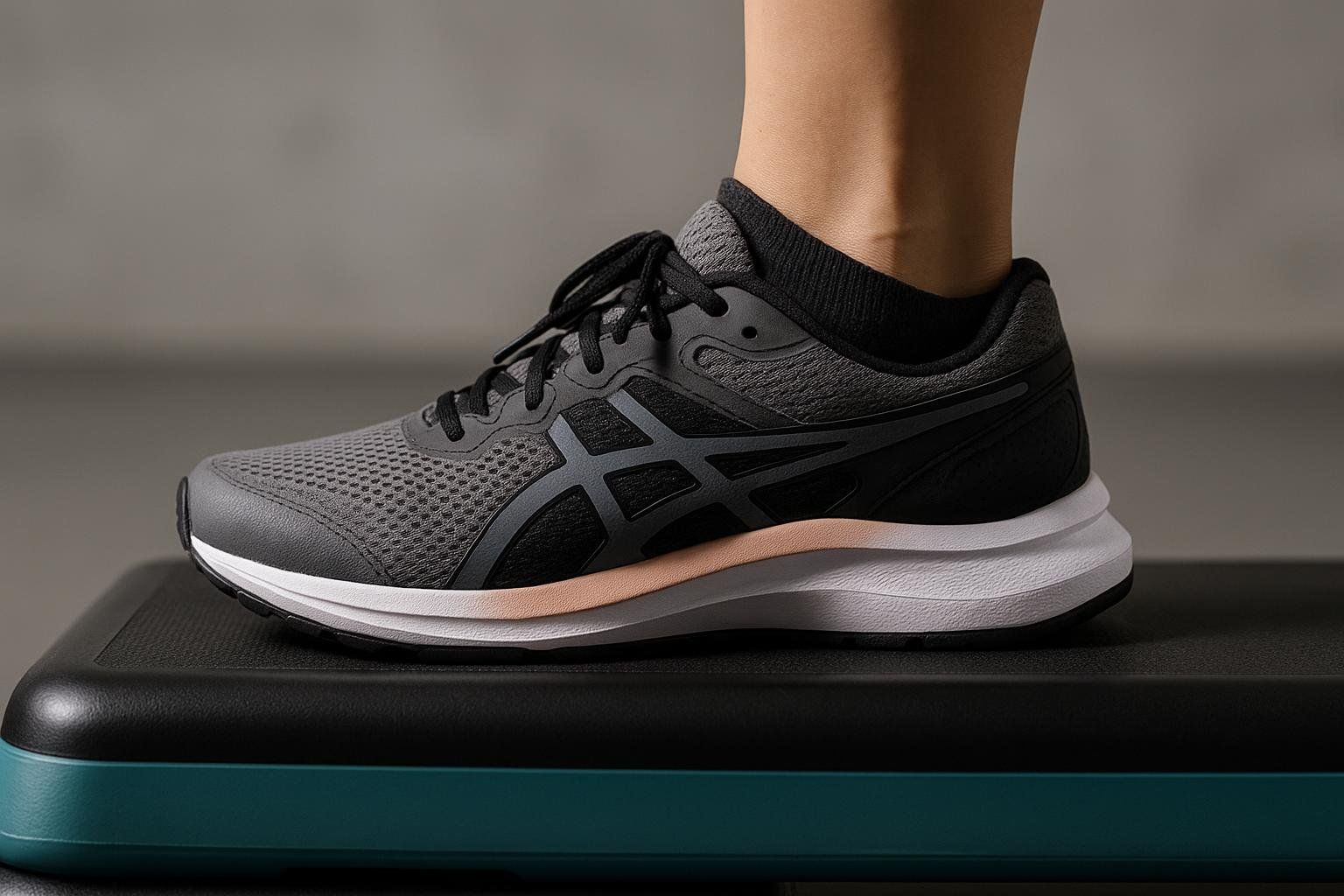
- Plant your whole foot on the platform—no hanging heels.
- Drive through the mid-foot, stand tall at the top.
- Step down softly to minimize joint stress.
Need more low-impact ideas? Check our Low-Impact Cardio Guide.
4. 15 Aerobic Step Exercises
Follow the step-by-step cues to nail your form and avoid common mistakes.
Cardio Staples
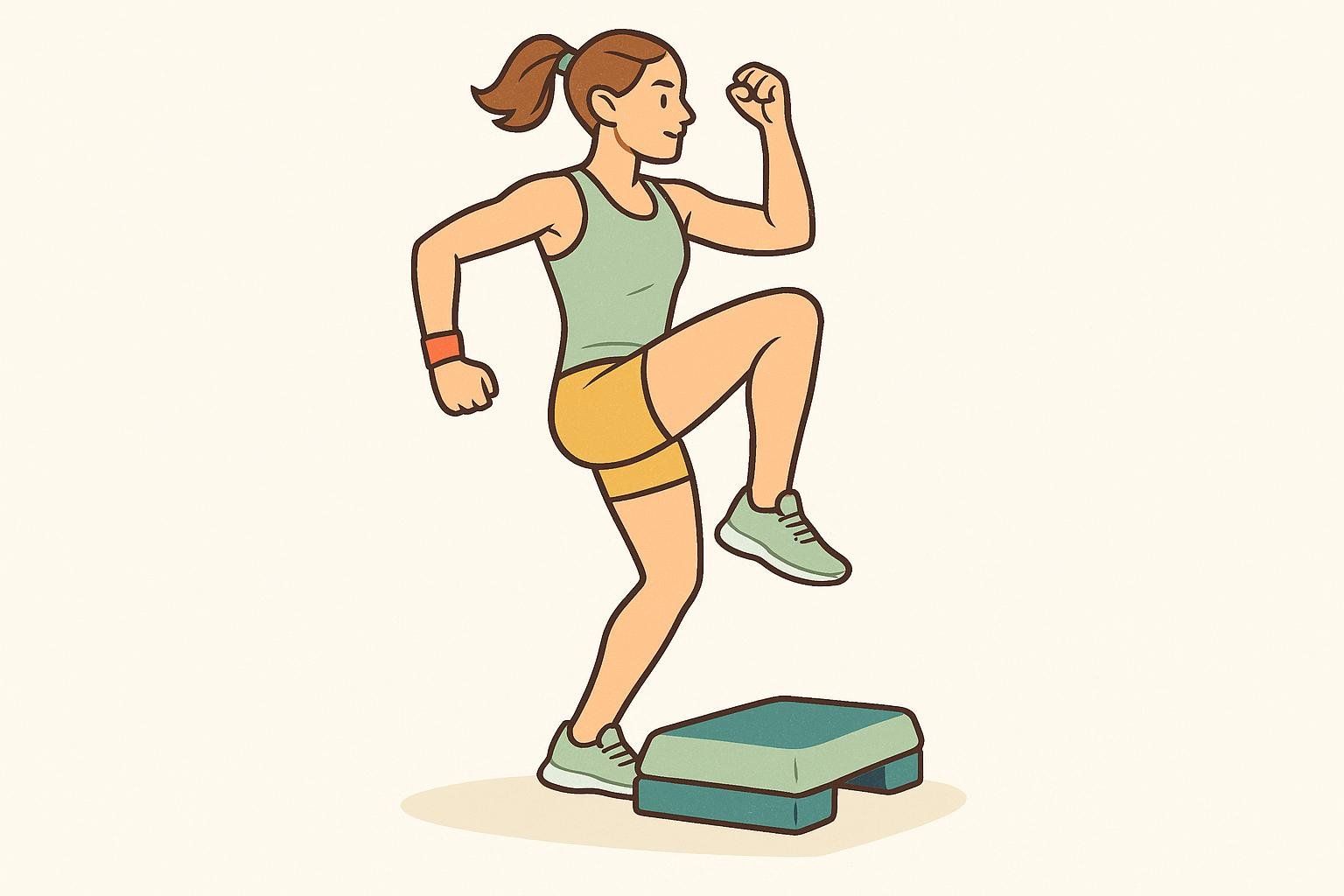
-
Basic Step
• Step right foot onto bench.
• Bring left foot up; stand tall without locking knees.
• Step down right then left; alternate lead legs each set. -
V-Step
• Step right foot to front-right corner, left foot to front-left (forming a “V”).
• Keep chest up, core braced, knees over toes.
• Step down left then right to the center. -
Corner Knee
• Step right foot to the front-right corner.
• Drive the left knee up toward your hip, squeezing your abs.
• Step down with the left foot, then the right, to return to the floor. Alternate sides. -
Hamstring Curl Step
• Step up with right foot.
• Lift left heel toward glute (ham curl) while balancing.
• Step down left then right; switch lead legs. -
Over-the-Top
• Face the long side; step right then left across bench.
• Land softly on opposite floor side, hips square.
• Reverse the pattern to return.
Strength & Power Builders
-
Step-Up + Press
• Hold dumbbells at shoulders; step up with right foot.
• Drive left knee high while pressing weights overhead—avoid arching back.
• Step down left then right; alternate sides. -
Bulgarian Split Squat
Setup:
• Sit on the step’s edge and extend one leg straight; note where your heel touches the floor—that spot marks ideal front-foot placement.
• Stand, face away from the bench, and place your back foot laces-down on the step.
Execution:
• Square hips and brace core.
• Lower until the front thigh is parallel, knee over ankle.
• Push through the front heel to rise. Complete all reps, then switch legs. -
Deficit Reverse Lunge
• From standing on step, step back with left foot to floor.
• Lower both knees to ~90°, slight forward hip hinge.
• Drive through front heel to return to standing on the step; alternate legs. -
Lateral Box Squat
• Stand sideways—inside foot on bench, outside foot on floor.
• Sit hips back, weight in heels, knees tracking over toes.
• Push through both legs to stand; switch sides. -
Explosive Step-Up
• Step up with right foot.
• Drive left knee high and add a small hop off bench, landing softly.
• Step down and alternate legs.
Core & Balance Finishers
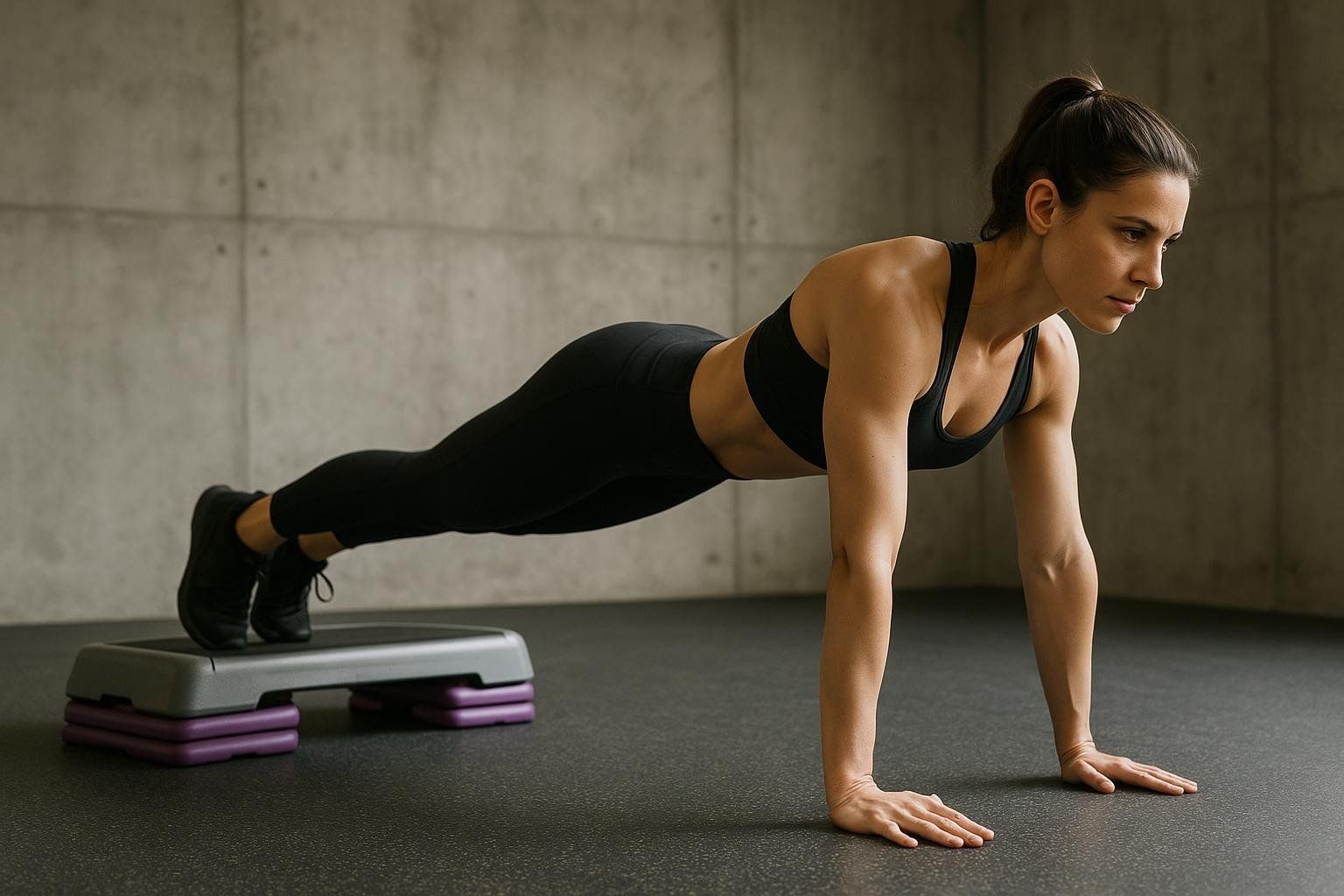
-
Plank Toe Tap
• High plank with feet on bench.
• Tap right foot to floor, return, then left—hips stay level.
• Maintain active shoulders and neutral spine. -
Mountain Climber on Step
• Hands on bench, shoulders over wrists.
• Drive knees toward chest rapidly while keeping back flat.
• Limit hip bounce for better core engagement. -
Side Plank Hip Drop
• Forearm on bench, elbow under shoulder, feet stacked.
• Lower hips toward floor without rotating torso.
• Lift back to neutral; switch sides after reps. -
Bear Crawl Over Step
• Start in bear stance (knees hovering).
• Crawl Over – Four Steps:- Right hand onto step.
- Left foot onto step.
- Left hand onto step.
- Right foot onto step, then crawl forward off the far side.
• Crawl Back – Four Steps: - Left hand back to step.
- Right foot back to step.
- Right hand back to floor.
- Left foot back to floor.
• Keep knees low, spine neutral throughout.
-
Seated Russian Twist
• Sit on step, lean back ~45°, lift heels.
• Rotate torso to tap floor beside hip, exhaling on each twist.
• Keep spine long; add light weight when stable.
Pick 2–3 moves from each category to build your own routine.
5. Programming Templates
Beginner (3 days/week)
- Warm-up: march or step-touch 3 min
- Perform the following 4-move circuit for 2 rounds — 20 s work / 40 s rest per move: Basic Step, Ham Curl, Corner Knee, March on Top
- Cool-down stretch 3 min
Intermediate (4 days/week)
- Choose five moves from the Cardio Staples list.
- 30 s work / 15 s rest × 3 rounds of your selected moves.
- Strength superset: Step-Up + Press & Bulgarian Split Squat 3 × 8
- Core: Plank Toe Tap 3 × 30 s
Advanced HIIT (2 days/week)
- 40 s work / 20 s rest × 5 moves; repeat 4 rounds (≈ 24 min)
- Alternate explosive and strength variations
- Finish with Bear Crawl Over Step 2 × 60 s for total-body burnout
6. Calorie-Burn & Progress Tracking
- Calories Burned: Use our Calories-Burned Calculator for an evidence-based estimate.
- RPE Check-In: On a 1–10 scale, aim for 6–8 on most work intervals.
- DEXA Scan Feedback: Quarterly BodySpec scans reveal whether you’re losing fat and preserving lean muscle.
7. Safety & Joint-Friendly Mods
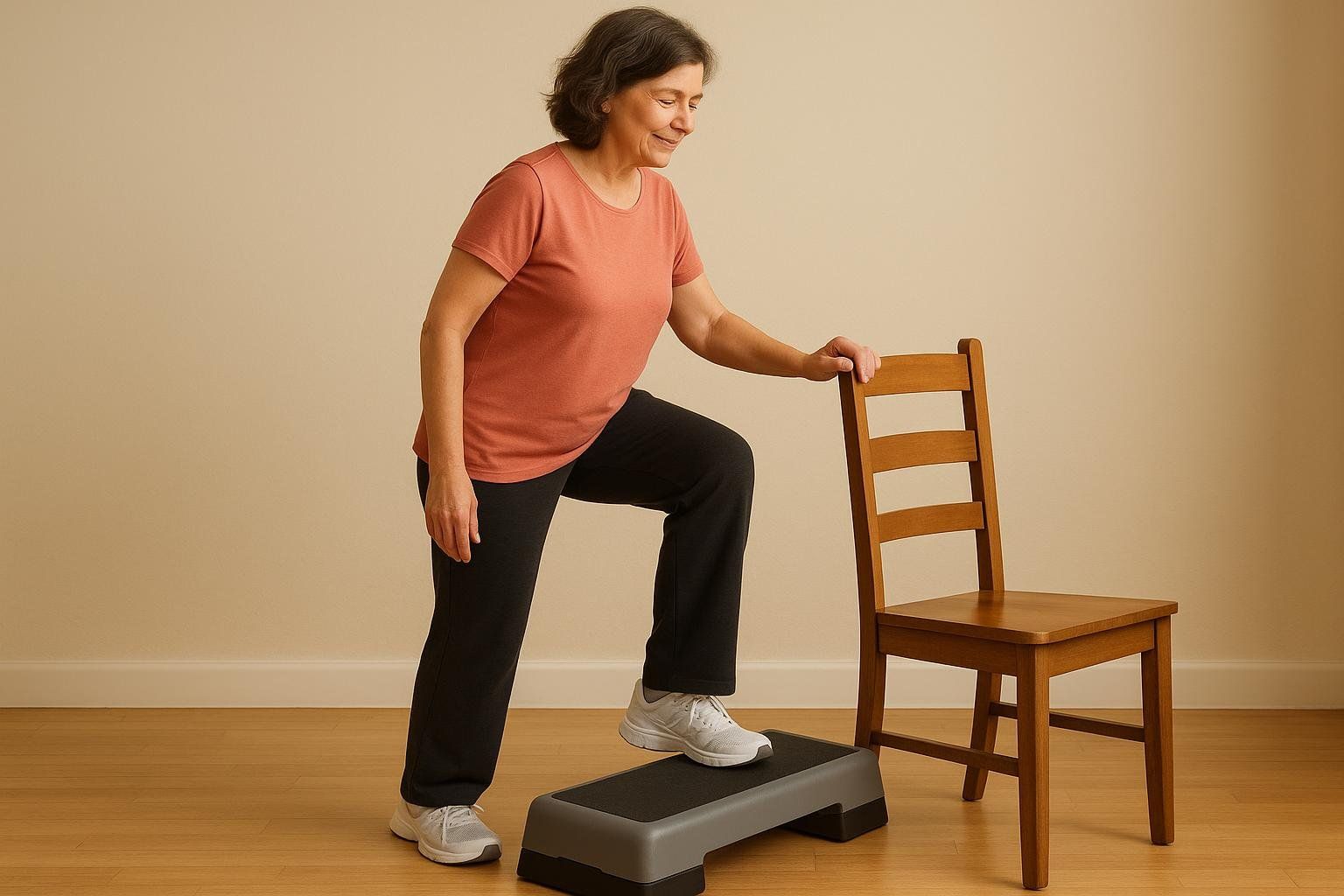
- Keep step height low and eliminate hops if you have knee or ankle pain.
- Use a sturdy chair back for balance until you’re confident.
- Pregnant? Lower the step, slow the pace, and avoid overheating (see general safety advice from WebMD).
- Osteoporosis? Prioritize strength versions and review our Bone-Density Strength Guide.
8. Frequently Asked Questions
What’s the best step height for beginners?
Start at 4–6 inches; once you can maintain good form for 20 straight minutes, add a riser.
How many calories does step aerobics burn per hour?
Roughly 420–588 calories for most adults weighing 125–185 lb according to Harvard Health’s activity chart.
Can step aerobics improve balance?
Yes—unilateral stepping and directional changes challenge proprioception. Pair sessions with our exercises to improve balance for faster gains.
9. Measure Your Progress with a DEXA Scan
Scale weight can’t reveal whether your new hobby is carving fat or muscle. A DEXA scan delivers:
- precise body-fat and lean-mass data
- visceral-fat score to gauge metabolic risk
- bone-density estimates—perfect for tracking those osteoblast gains!
Ready to see the science behind your sweat? Book your BodySpec scan and turn each step into data-backed results.
Disclaimer: This content is for educational purposes only and is not medical advice. Consult a qualified professional before starting any new exercise program.
